The ports and packages to make your charts look like they came from the web comic xkcd are coming out in rapid fashion. Dan Foreman-Mackey stylized charts in JavaScript using D3, Mark Bulling did the same in R (dead/spam link), Emilio Torres Manzanera made an xkcd package, and Jake Vanderplas described how he did in Python. Still waiting for a Gangnam theme.
-
-
-
In a multipart special report, The Washington Post investigated homicides in the nation’s capital between 2000 and 2011.
A Washington Post review of nearly 2,300 slayings in the city between 2000 and 2011 found that less than a third have led to a conviction for murder or manslaughter, although the numbers have improved in the past few years. More than 1,000 cases remain unsolved.
In a 15-month study, The Post individually tracked every homicide in the District between 2000 and 2011 to learn what ultimately happened to each ensuing case. Such studies, known as longitudinal, are not generally produced by law enforcement, because they are considered to be too time-consuming.
The interactive portion of the report lets you see the data from a number of angles. The focus is on the map, which shows an overview of homicide count and then individual cases as you zoom in to neighborhoods. Navigation on the left lets you filter by case status, race, age, motive, and manner, and the display on the bottom left changes as you change queriers or select different parts of the map. You can also play a time lapse, and the map updates for each year.
There’s a lot to look at from different angles, and especially if you live in the area, the feature is worth a closer exploration.
As a side note: The Post graphics team seems to have upped their game as of late. I’m not sure what they put in the water over there, but I hope they keep drinking it. [via Source]
-
-
 Pilot Mark Vanhoenacker describes the history and careful design of the everyday baggage tag, from the synthetic material it’s printed on, to the information each modern tag contains.
Pilot Mark Vanhoenacker describes the history and careful design of the everyday baggage tag, from the synthetic material it’s printed on, to the information each modern tag contains.Just as you can track, step-by-step, a package you’ve sent by FedEx, airlines use bar-coded tags to sort and track bags automatically, through the airport, and across the world. That’s a huge change from the old days, when bags were dropped into the “black box” of a manually sorted baggage system. But crucially, an ABT doesn’t just contain a bar code—it’s also custom-printed with your name, flight details, and destination. That made the global implementation of ABTs much easier, because early-adopters could introduce them long before every airport was ready—a huge advantage when it comes to seamlessly connecting the world’s least and most advanced airports. And of course, ABTs can still be read manually when systems break down.
It’s funny how something so commonplace like a sticky loop label goes through these iterations. There are people behind these things who think about the ins and outs of how something works, no matter how small they might seem, so that we don’t have to. We just tear them off, toss ’em in the trash, and move on to the next one, because that’s what they were made for.
-
-
-
-
ReConstitution 2012, a fun experiment by Sosolimited, processes transcripts from the presidential debates, and recreates them with animated words and charts.
Part data visualization, part experimental typography, ReConstitution 2012 is a live web app linked to the US Presidential Debates. During and after the three debates, language used by the candidates generates a live graphical map of the events. Algorithms track the psychological states of Romney and Obama and compare them to past candidates. The app allows the user to get beyond the punditry and discover the hidden meaning in the words chosen by the candidates.
As you let the transcript run, numbers followed by their units (like “18 months”) flash on the screen, and trigger words for emotions like positivity, negativity, and rage are highlighted yellow, blue, and red, respectively. You can also see the classifications in graph form.
There are a handful of less straightforward text classifications for truthy and suicidal, which are based on linguistic studies, which in turn are based on word frequencies. These estimates are more fuzzy. So, as the creators suggest, it’s best not to interpret the project as an analytical tool, and more of a fun way to look back at the debate, which it is. It’s pretty fun to watch.
Here’s a short video from Sosolimited for more on how the application works:
-
-
Mike Bostock and Shan Carter visualized how states have shifted parties over the years, going back to 1952.
Recent elections have placed a heavy emphasis on “swing states” — Ohio, Florida, and a handful of other states most-easily swayed from one party to the other. Yet in the past, many more states shifted between the Democratic and Republican parties. A look at how the states stack up in the current FiveThirtyEight forecast and how they have shifted over past elections.
Each row represents an election, and the horizontal axis reflects the size of a lead for a party. So as you scroll down, you can see how much (or little) a state has changed across elections.
Instead of taking the obvious exploratory route, where you select your state and scroll to the bottom, Bostock and Carter took a story-driven approach. Points of interest are on the left. Click on a button and the relevant states for that insight are highlighted. (Although you can still mouse over states to see their paths and keep states highlighted by with a continuous scroll.) This is a good one worth exploring for a while.
See also Adrien Friggeri’s interactive from earlier this year that shows Senate agreement.
-
-
Sustainable Design Lab at MIT and MoDe Studio estimated the potential hotspots for electric photovoltaics in Cambridge, Massachusetts and mapped it.
“High PV Potential Area” is the footprint, in square feet, of the portions of a roof that, by considering both the real surface projection to its actual slope and this surface’s annual irradiation, yield a “good” to “excellent” result. These values are based on MIT’s calculations and are shown as orange and yellow dots on the viewer, respectively.
If all the door-to-door salesmen trying to sell me solar panels showed me something like this for where I live, I’d be a lot more receptive.
-
-
-
-
-
-
Number of likes and shares for a Facebook post are just simple aggregates that give you an idea of how popular that post was, but they don’t tell you anything about how that post got so popular. For Facebook Stories, Stamen Design explored how a single post can spread through the network, via three viral photos shared by George Takei.
Each visualization is made up of a series of branches, starting from George. As each branch grows, re-shares split off onto their own arcs. Sometimes, these re-shares spawn a new generation of re-shares, and sometimes they explode in short-lived bursts of activity. The two different colors show gender, and each successive generation becomes lighter as time goes by. And the curves are just for snazz.
So you see a beautiful burst in the beginning, as the photo is shared by people who follow Takei, and then the photo spreads within smaller groups of friends. The above is from the animation that shows how a graphic for famous failures spread.
-
 From the October 10 Boston Metro. Oops. [via]
From the October 10 Boston Metro. Oops. [via]

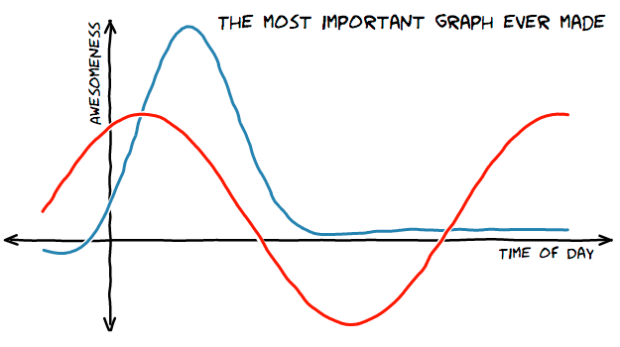
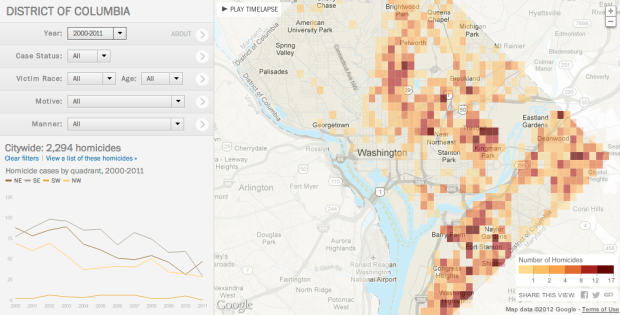
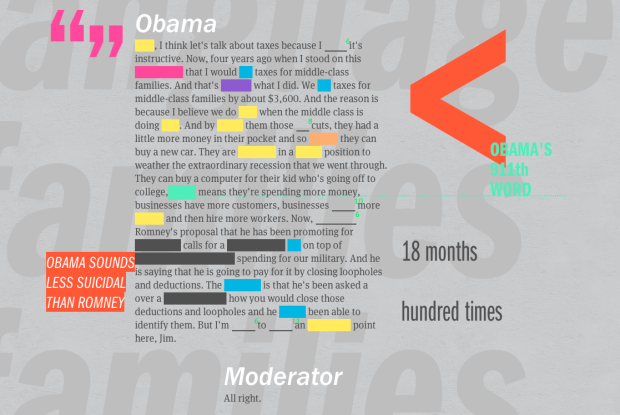
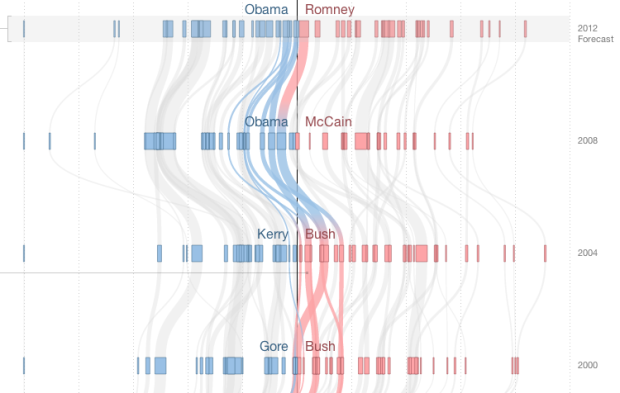
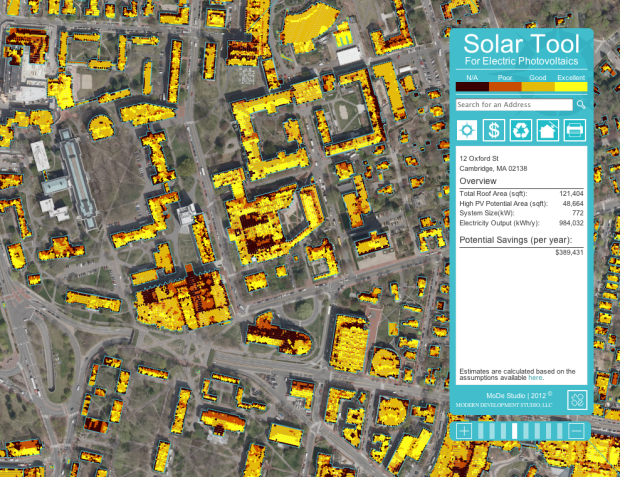

 Visualize This: The FlowingData Guide to Design, Visualization, and Statistics (2nd Edition)
Visualize This: The FlowingData Guide to Design, Visualization, and Statistics (2nd Edition)










